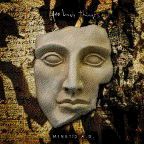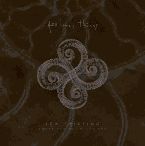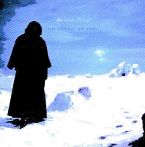
The Arrangers of Lost and Found Sound [2011-04-21]400 Lonely Things is the artistic duo of Jonathan McCall and Craig Varian. Creating together since 1988, they utilize the full spectrum of experimental, electronic and ambient music. The following is an email interview with Craig and Jonathan; they graciously explain their history and future.m[m]400 Lonely Things began in 1988, what was it that brought yourself and Jonathan McCall together? What is it that has kept the collaboration going? JONATHAN McCALL: We met in college. Although we've been separated geographically for years now, we've remained close friends. There have been times over the years where we've found it difficult to find time for our music but it always has remained a consistent part of our relationship. CRAIG VARIAN: I'd say that there's an element to our music that is also an element of our friendship, a philosophical and artistic connection that's always been there. I think we are both saddened by the same things in life and also find the same things funny. While 400 Lonely Things focuses more on the quieter and subdued side of ourselves, we also do absurd, crazy music for each other just to be stupid and make each other laugh, and some of our stuff is just the opposite - too disturbing to be fun or reflective. We also like to do shit with beats too. Even though we really have never released any of that kind of stuff, it certainly informs the sensibilities of 400 Lonely Things. m[m]Was there a certain band/musician that inspired you both? J: Craig and I certainly have similar musical tastes and we both have an appreciation for widely diverse forms of music. I don't believe any one particular band/ musician stands out above any other - we draw inspiration from a lot of the same sources and at times these sources have non-musical origins. C: I can think of something really specific that answers this question and also sums up what I was trying to say in the previous question. In January of 1988 when we first started hanging out, Jonathan was really into Dead Can Dance and I was into the Butthole Surfers. Jonathan thought the Butthole Surfers were just some hardcore band with a goofy name and I thought Dead Can Dance was a dance band (due to their name and the fact that the only song I had ever heard by them was the first track on their first album - "The Fatal Impact"). So Jonathan played me Within the Realm of a Dying Sun by DCD and I played him Locust Abortion Technician by the Buttholes and I think we swapped favorite bands on the spot. To this day, the classic albums by both of those bands are still in heavy rotation for both of us. m[m]While all of your six albums are different thematically, there's a certain haunting/melancholic quality to the atmospheres you both create, is that done intentionally? J: The somber qualities have become a distinguishing feature. From my perspective I suppose the intention is for each piece to have a certain reflective or contemplative quality. C: For me it's not intentional. Jonathan is a musician and can write what he intends to write without much effort. I'm not a musician at all. I just start with an interesting sound and go from there, but I'm drawn to sounds with a nostalgic texture and that makes my contributions to 400 Lonely Things have a certain consistency. m[m]How would you describe 400 Lonely Things to someone who's never heard your work? J: Many years ago, I used the term "experimental" to describe the work we were doing, but that moniker over a period of time lost its descriptive quality due to rampant overuse and I've tried to avoid using it. (This seems to apply to so many 'genre terms' that I believe it renders the words meaningless.) The nature of our recordings lended itself well to not being easily pigeon-holed, so ever since I've described what we do as "difficult to describe" and then eagerly press the listener for a description of their own. Personally, I've always found the listener's perspective and descriptions of our music much more interesting than any that I can provide. C: That's always been a bit of thorn in my side, I've never been able to describe our music in a way that doesn't leave me feeling a bit frustrated. I've taken to saying we record dark ambient music, even though that's not true; it's just very easy to say and allows me to avoid that unpleasant of feeling of not getting tongue-tied. With the Pimalia label, we incorporated the theme of "genre-free listening" into the overall mission statement of the label and I like that. The endless pigeon-holing and dividing of music into genres and sub-genres and sub-sub genres just isn't for us. For example, we often incorporate elements of drone and plunderphonics, but it would be absurd to call what we do dronederphonic - although I'm sure that could be a legitimate sub-sub-genre in the future if it isn't one already. I can already tell I'm going to start using "dronederphonics" ironically and will eventually drop the irony. Like Jonathan said, we learn more from the opinions of others. How would you describe it?

m[m]Concerning the Minutes A.D. project, though its subject matter is a sad one (the passing of Jonathans’ father), there seems to be an underlying feeling of warmth and peacefulness. Was that a conscience decision, or one that come about naturally?
J:As the project took form, the peaceful aspect became a consistent part of Minutes A.D., but it wasn’t pre-calculated. These undertones seemed appropriate as it developed and then evolved accordingly. m[m]Be Still Life is an interesting release, it has a lot of ideals to it; faith, happiness and most importantly the inability to stop time (though as human beings we may wish for it). It conveys the feeling of contentedness yet there's a sadness there too, where you satisfied with the end result? C: Yes, very much satisfied with most of it. There easily some of my favorite songs on that album; Red Rover, A Still Life and Open Windows are songs that I don't seem grow tired of and I listen to those songs quite often. I think the opening track Swiss Miss makes an excellent preface to the rustic summer feeling I was trying to latch onto; that song is dawn / daybreak / morning, and the rest of the album moves sequentially through a summer day and into the evening and night. While recording that album, I'd often play the finished tracks on a weekend with the weather just right, the doors and windows open, my daughter playing in the yard with the dogs, and my wife and I would be relaxing on the porch. She would remark that it fit in really well with the world outside. The birds and bugs and the sounds of the outdoors seem to complete the songs and I found that curiously validating - that I was able to record something that was harmonious with our environment was a really nice feeling. That being said, sometimes I have second thoughts about the last track on the album - it's a little too sinister compared to the tracks that proceed it - although, thematically it makes sense as it's the song that ushers in a shadowy evening / dark night in the woods. 
m[m]Michael and Phil Harrells' short film Be Still Life was inspired by your recording, how did you like the finished film? Did you think it captured the ideas of the music? C: Michael and Phil's short film is easily the most meaningful thing to happen in regards to our music interacting with the world at large. It overshadows some great reviews, having our Tonight of the Living Dead album endorsed by the original Night of the Living Dead's Judith O'Dea, and having received some very kind words about our recordings from artists that are hugely influential to us. That film is really special. It was also a complete surprise. I had no idea they were making it until they sent it to me. And it brings to mind what Jonathan was saying earlier about how the descriptions of others helps us understand what we are doing because we can't escape our own subjectivity. What Michael and Phil did would never have occurred to me to make, and yet they've nailed the feelings that we knew where there in our music and they did it in this very personal, down-to-earth way, and have shown us aspects of our work that we've never seen. While Phil and I collaborated on a video from the Tonight of the Living Dead album and had met a year earlier, I had never even met Michael before the film was made. We finally met nearly a year later when the film was premiered at the Flyway Film Festival in Pepin, WI. The film itself was very well received by an audience of mostly film-makers, who then posed a series of really thoughtful questions during the Q&A afterwards that lasted longer than the film itself. That was a great experience. Michael and I both thought the film and music would be too introspective to connect with the outside world, and it wasn't the case at all. Meeting Michael and thinking about his brother Phil, the whole movie and their take on it just totally makes sense. Even though it uses our music, the story and the feelings told through the imagery and editing are all theirs - it's THEM - and that totally fits my artistic sensibilities. I love it when inspiration and incorporation meet and a new combination is produced. Since so much of 400 Lonely Things is derived from found sounds, images, and manipulations of electronic culture, it feels good to be a link in that chain - of being artistically influenced by others and then influencing others artistically and so on. Some nice things we've heard over the years have been from painters and writers and sculptors telling us that they love to listen to our albums while creating their art and I love it that we can be a part of that process. Another exceptional example of this can be found in the absolutely fantastic Halloween environments created by Pumpkinrot, who often has us on in the background when hand crafting sinister autumnal displays that make Tim Burton look unimaginative. Watch the slideshow for his 2010 Haunt, it uses a song from Tonight of the Living Dead. LINKS DISCUSSED: Tonight of the Living Dead video: http://www.youtube.com/400lonelythings#p/u/1/E8vWbIQbyXw Be Still Life short film: http://bestilllife.com Pumpkinrot's 2010 Yard Haunt: http://www.pumpkinrot.com/pages/Page39.htm m[m]400 Lonely Things will also be contributing to the score of Gary King's forthcoming film "Bad Luck Dandelion", any hints on what we might hear? C: I need to talk to Gary about this, no idea if we will be actively scoring or if he just plans on incorporating existing recordings into his film, or a combination of both. He has all of our albums and is welcome to do as he wishes with them. He recently used two of our tracks in the background of his latest trailer for his forthcoming film "How Do You Write a Joe Schermann Song?". Again, another context that I would never have pictured our music existing in, and yet there it is fitting in nicely and not being the sore thumb I always imagine our music to be. Here's a link to the trailer: LINK DISCUSSED: How Do You Write a Joe Schermann Song? trailer: http://vimeo.com/20315557 m[m]You've released A Barsoomian Lullaby Volume Two: The Depths of Omean, the atmospheres created are fantastical, ethereal and icy. What were the feelings or ideas were you hoping to inspire? m[m]. Additional to the dreamy atmosphere you've created there is a definite ominous feeling that pervades some of the tracks, is that a foreshadowing of what we might hear on Volume Three? C: What I'm really aiming for with the Barsoomian series is to express a lifetime of longing to live in the world that the Martian novels of Edgar Rice Burroughs conjures up in my imagination - its environment, its cultures, its technology, and most definitely its monsters. It's critical to me to do this before the Pixar movie comes out this summer - to stake my tiny imaginary claim to ERB's Martian legacy before it's once more part of mainstream pop culture, a position it has not occupied in my lifetime. Those books are a part of me. I'm not really sure what Volume Three holds in store. The entire hour of Volume Two is made from a total of 5 completely disparate samples, ranging from the 70's TV show Little House on the Prairie to Phil Collins-era Genesis and a Marty Robbins sample. For Volume Three, I was originally planning on doing something mostly with a 40 year old borrowed drum machine and an e-bowed guitar, just to go in a different direction, but it hasn't happened yet.

m[m]The Pimalia web site seems to be headquarters for 400 Lonely Things but you also release other bands/projects, any new releases coming up? C: I love the recordings of all the artists on Pimalia, but the label has been on hold for over a year now and will never come back without a serious change of approach. What happened was that in the first few months of 2010, my work situation became extremely unstable as the company I had been working for for the past decade slowly went bankrupt, draining me financially in the process and leaving me in a deep hole once it finally ground to a halt. I couldn't justify spending any more time or money on the label, and the stress I was trying to manage finally put me in the emergency room one night. During this period, I came to the re-realization that I hate selling music and that the very act of doing so was turning something I longed to escape TO into something I longed to escape FROM and that's unhealthy for me. I've learned this at least twice now, and I hope I never have to learn it again. Selling music is not for me. I'd much rather give it away. If the future holds anything for Pimalia and 400 Lonely Things, it will only happen with money, marketing, and promotion removed from the equation. I'd love to see Pimalia become a free music portal like TonAtom.net for all the artists on our roster at some point. LINK DISCUSSED: http://tonatom.net 
m[m]Given the you've been creating and recording for quite a while, for yourself and other projects, what else would you like to do in the future? J: Continued collaborations, solo projects, more works for film...and maybe an "experimental" project. C: Well, at the top of my list is to make the rest of our 400 Lonely Things catalog available online. We have at least another 10 albums just kind of sitting around in various states of completion, including The Forget Me Knot which is a seasonal follow up to Be Still Life, this one focusing on Winter, and a new series called Drone Roving - we are about halfway through recording the second volume of it at this point. I've also been mulling an extended play compilation of sleep music for the past couple of years that is still in an embryonic state. Most of the non-Pimalia artists I've approached about this have expressed interest in contributing to it (O Yuki Conjugate, T.A.G.C. and Fossil Aerosol Mining Project have confirmed). I'd like to get back to working on that as well. I'd also like for us to work with Pumpkinrot in some capacity in the future. Make a soundtrack to a future Haunt of his and perhaps make a long-form video project out of it, something like that. Our music is supposed to be featured in the forthcoming theatrical release Night of the Living Dead: Origins 3D, which - as its name suggests - is a sort of prequel to Night of the Living Dead. The screen shots I've seen of this have been incredible - it's Animé meets Monet. I've talked with director Zebediah de Soto a few times, and the project sounds really intriguing - he's using a 3-D live-action animation process that he developed that's similar to what James Cameron used for Avatar. Can't wait to see it. Link discussed: http://en.wikipedia.org/wiki/Night_of_the_Living_Dead:_Origins_3D m[m]Any last words? J: Yes. C: I'd like to encourage anyone with an interest in "dronederphonic" sounds to listen to everything by the criminally overlooked Fossil Aerosol Mining Project. To William Basinski, I'd like to say that your music makes my very cells turn inside out with blissful catatonic introspection. To Boards of Canada I'd like to say, it's been six years - how about a new album already? And to you Viktorya, thanks for your patience. Sorry putting this interview together took so long. We appreciate your interest and thank you for the chance to ramble about our ramblings. 1. LINKS DISCUSSED: Fossil Aerosol Mining Project: http://www.afterdaysmedia.com/Fossil_Aerosol_Mining_Project.html
Viktorya Kaufholz
|

